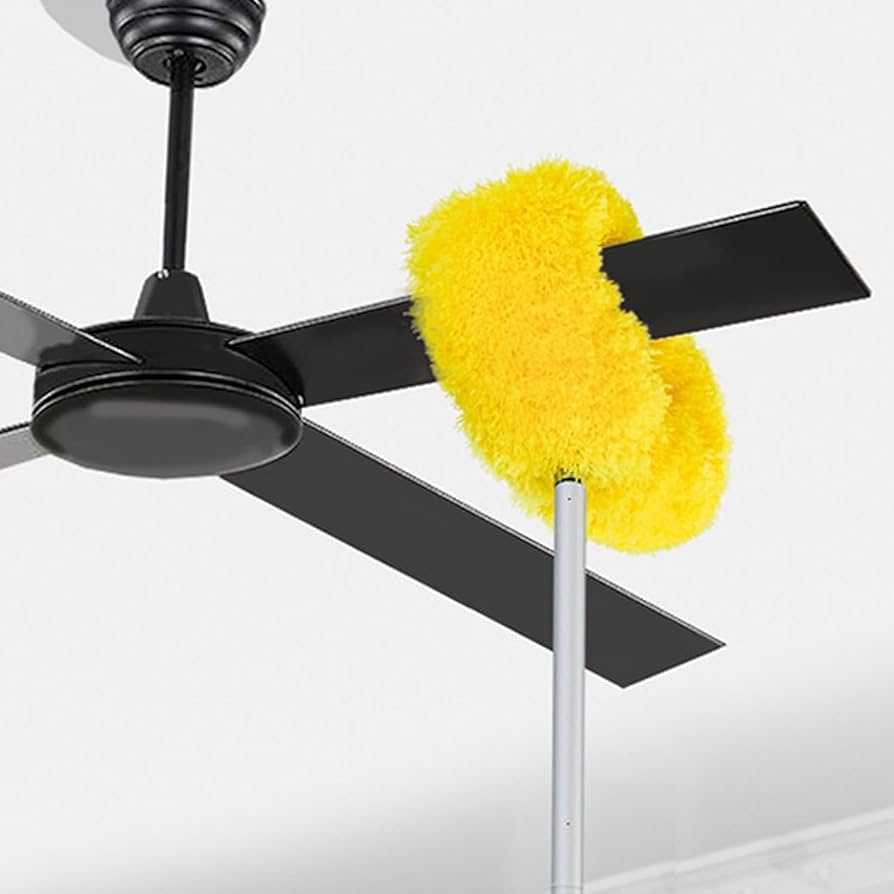
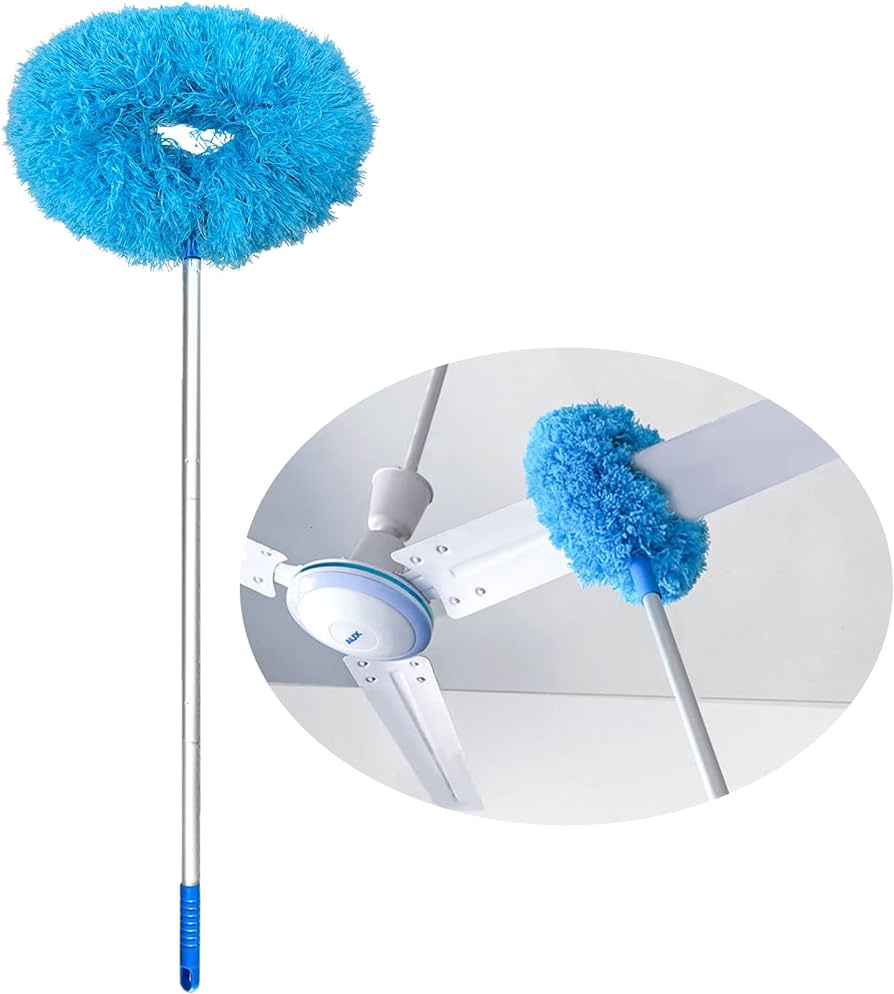
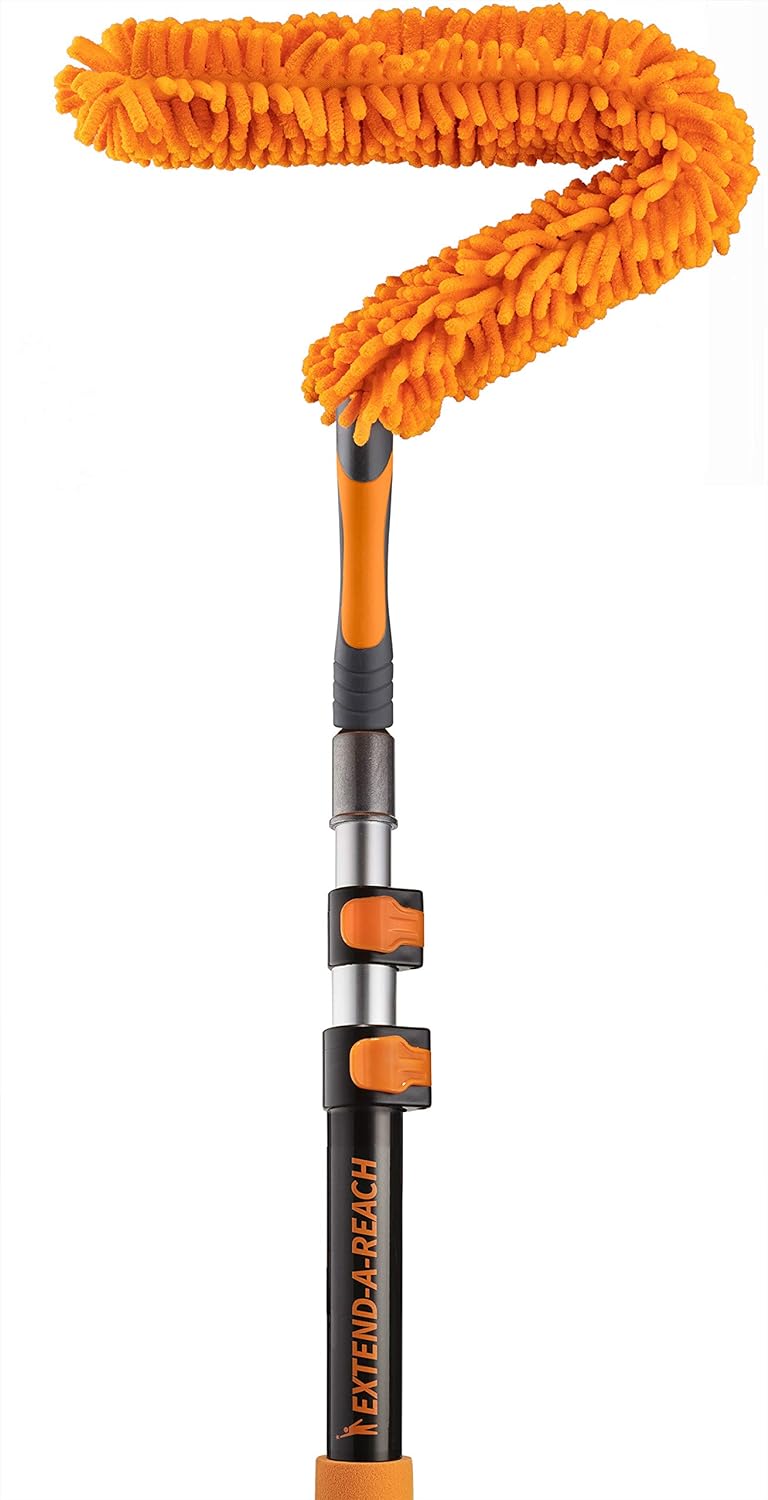
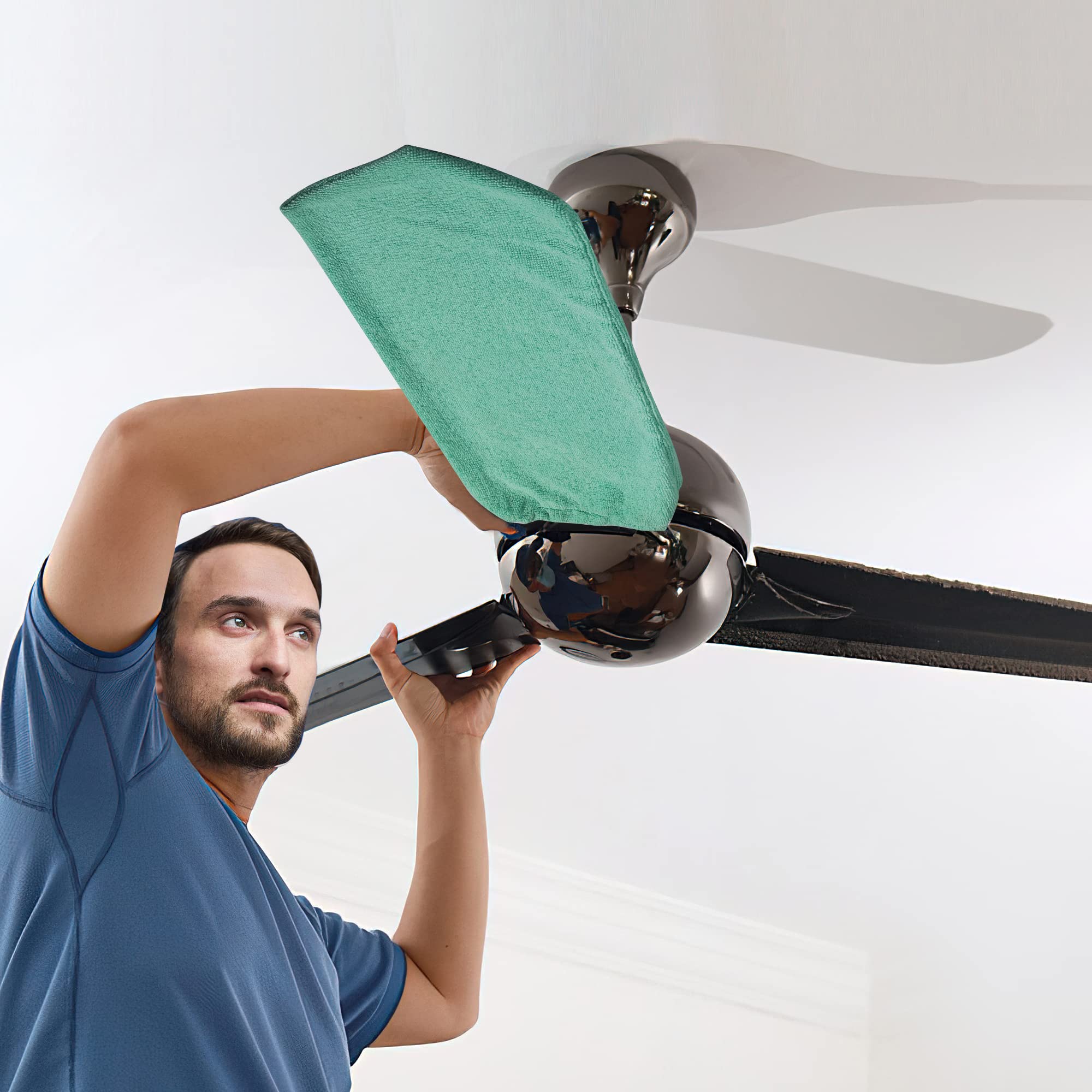
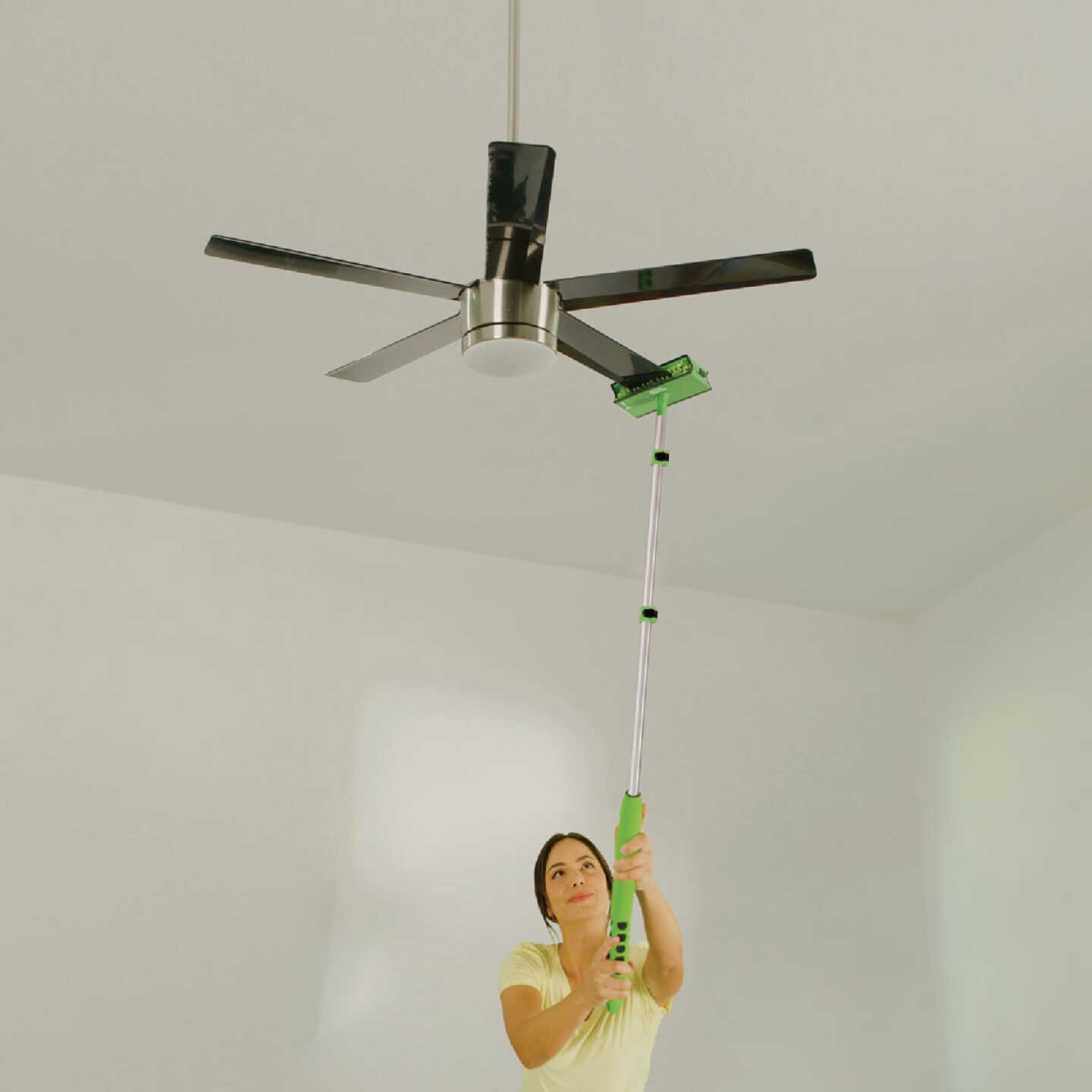
Introduction
In today’s fast-paced world, convenience and versatility are key. This is where ceiling fan dusters step in, offering a combination of features like long handles, microfiber cloths, and washable heads. Whether you’re cleaning your own home or a rental property, a ceiling fan duster can help you reach those hard-to-reach places and keep your ceiling fans dust-free.
Types of Ceiling Fan Dusters
Ceiling fan dusters come in a variety of styles to suit different needs and preferences. Here are the main types:
-
- Traditional Ceiling Fan Dusters: These dusters have a long, telescoping handle and a microfiber cloth head that can be attached and detached. They are a good all-around option for cleaning ceiling fans.
Advantages:
- Long, telescoping handle reaches high ceilings
- Microfiber cloth head effectively traps dust
- Can be used with or without water
Disadvantages:
-
-
May not be as effective for cleaning delicate surfaces
-
Handle can be difficult to maneuver in tight spaces
-
Feather Dusters: Feather dusters are soft and gentle, making them a good choice for cleaning delicate surfaces like ceiling fan blades.
-
Advantages:
- Soft and gentle on delicate surfaces
- Effective at removing light dust
- Can be used to clean hard-to-reach areas
Disadvantages:
-
-
May not be as effective for cleaning heavily soiled surfaces
-
Feathers can shed and make a mess
-
Microfiber Dusters: Microfiber dusters are effective at trapping dust and dirt, making them a good choice for cleaning ceiling fans with heavy dust buildup.
-
Advantages:
- Effective at trapping dust and dirt
- Can be used with or without water
- Washable and reusable
Disadvantages:
-
-
May not be as soft and gentle on delicate surfaces as feather dusters
-
Can be more expensive than feather dusters
-
Wool Dusters: Wool dusters are naturally static-charged, which helps them attract and trap dust. They are a good choice for cleaning ceiling fans in areas with high dust levels.
-
Advantages:
- Naturally static-charged to attract dust
- Effective at cleaning in areas with high dust levels
- Can be used to clean hard-to-reach areas
Disadvantages:
-
-
May not be as soft and gentle on delicate surfaces as feather dusters
-
Can be more expensive than feather dusters
-
Dusters with Extension Poles: Dusters with extension poles can reach high ceilings without the need for a ladder. This makes them a safe and convenient option for cleaning hard-to-reach ceiling fans.
-
Advantages:
- Reaches high ceilings without a ladder
- Safe and convenient to use
- Can be used to clean other high-hanging fixtures
Disadvantages:
- Can be more expensive than other types of ceiling fan dusters
- May be more difficult to maneuver in tight spaces
Choosing the Right Ceiling Fan Duster for You
When selecting a ceiling fan duster, consider the following factors:
-
Size: Choose a duster with a handle that is long enough to reach your ceiling fans. If you have high ceilings, you may need a duster with an extension pole.
-
Material: Choose a duster with a head made from a material that is appropriate for the type of dust you are cleaning. For example, if you are cleaning ceiling fans with heavy dust buildup, you may want a microfiber duster.
-
Features: Some ceiling fan dusters have additional features that may be appealing to you, such as washable heads, swivel heads, or built-in lights.
Additional Features to Consider
In addition to the basic features mentioned above, some ceiling fan dusters offer additional features that may be appealing to you:
-
Washable Heads: Washable heads can be easily cleaned and reused, which saves you money and reduces waste.
-
Swivel Heads: Swivel heads allow you to clean ceiling fans from multiple angles without having to reposition the duster.
-
Built-In Lights: Built-in lights can help you see dust and dirt in dark areas.
How to Use a Ceiling Fan Duster
To use a ceiling fan duster, follow these steps:
-
Turn off the ceiling fan and unplug it. This will prevent the blades from spinning while you are cleaning.
-
Extend the handle of the duster to reach the ceiling fan blades.
-
Gently wipe the blades of the fan with the duster. Be sure to get into all the nooks and crannies.
-
-
Wash the duster head if it is washable. You can usually wash the head by hand with mild soap and warm water. Let it air dry completely before reattaching it to the duster.
-
Store the duster in a clean, dry place. This will help to prevent the growth of mold and mildew.
Tips for Cleaning Ceiling Fans
Here are a few additional tips for cleaning ceiling fans:
-
Clean the blades of the fan regularly to prevent dust buildup. Dust buildup can not only make your ceiling fan look unsightly, but it can also reduce air circulation in your home. Aim to clean your ceiling fans at least once a month, or more often if you live in a dusty environment.
-
Use a gentle cleaner to clean the blades of the fan. Avoid using harsh chemicals or abrasive cleaners, as these can damage the finish of the blades. A simple solution of water and mild soap is usually all you need.
-
Be careful when cleaning the blades of the fan. Do not put too much pressure on the blades, as this can bend or break them. It’s also a good idea to support the blades with one hand while you clean them with the other.
-
Dry the blades of the fan thoroughly after cleaning. This will prevent water spots from forming. You can use a microfiber cloth to dry the blades.
-
Consider cleaning both sides of the blades. While the underside of the blades may not be as visible, it can still collect dust. If your duster allows you to easily clean both sides, take advantage of that feature.
-
Clean other high-reaching fixtures while you’re at it. Dusters with extension poles can be used to clean other high-reaching fixtures in your home, such as light fixtures and vents. This can save you time and effort.
Conclusion
Ceiling fan dusters are a handy tool for keeping your home clean and dust-free. With a variety of styles and features to choose from, there is a ceiling fan duster out there that is perfect for your needs. By following the tips in this guide, you can keep your ceiling fans clean and dust-free, improve the air quality in your home, and extend the lifespan of your ceiling fans. After all, a clean ceiling fan is not only more aesthetically pleasing, but it can also help you breathe easier. So ditch the step stools and wrestling matches with furniture – grab a ceiling fan duster and make cleaning those high-up fixtures a breeze!
-